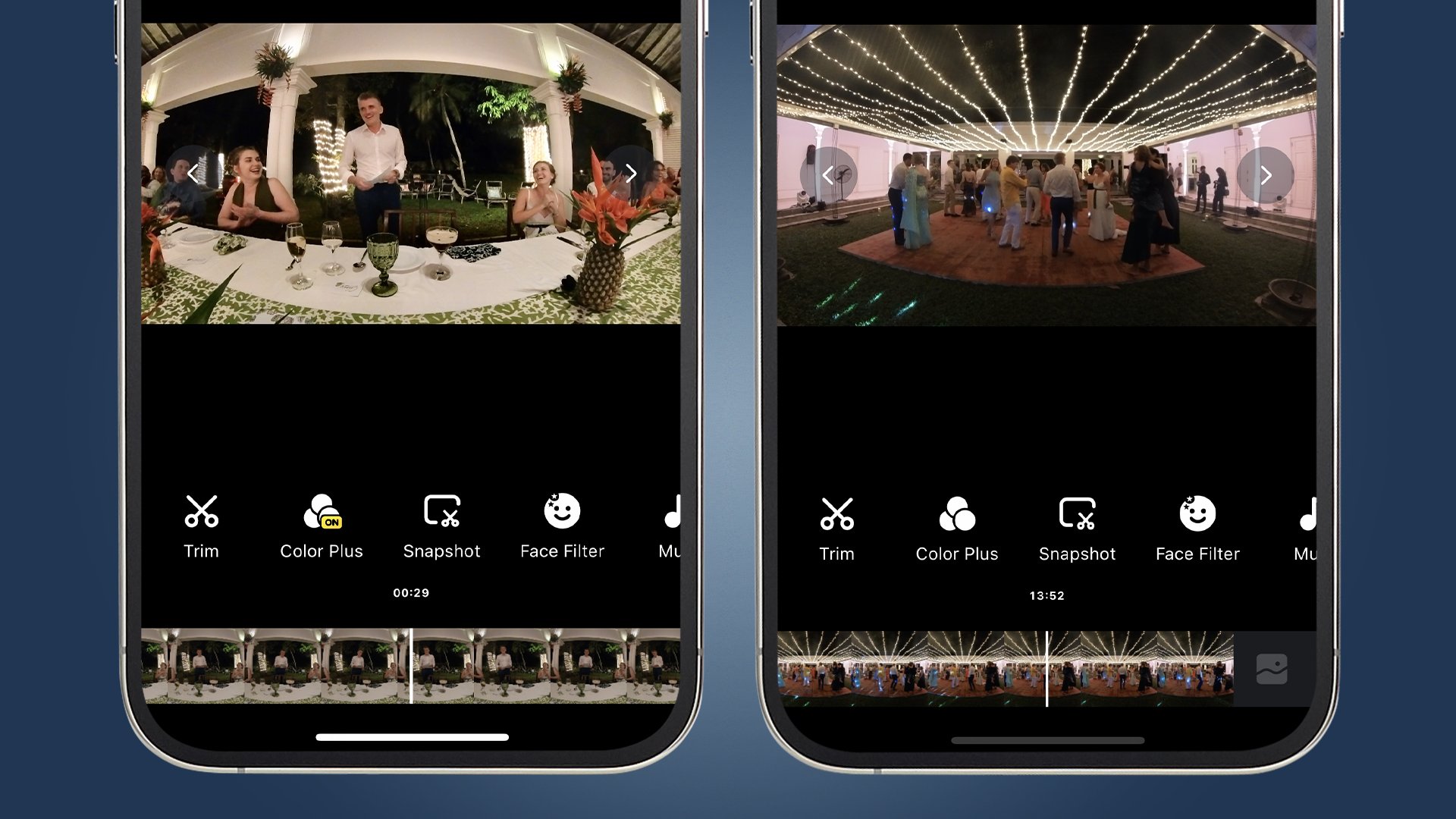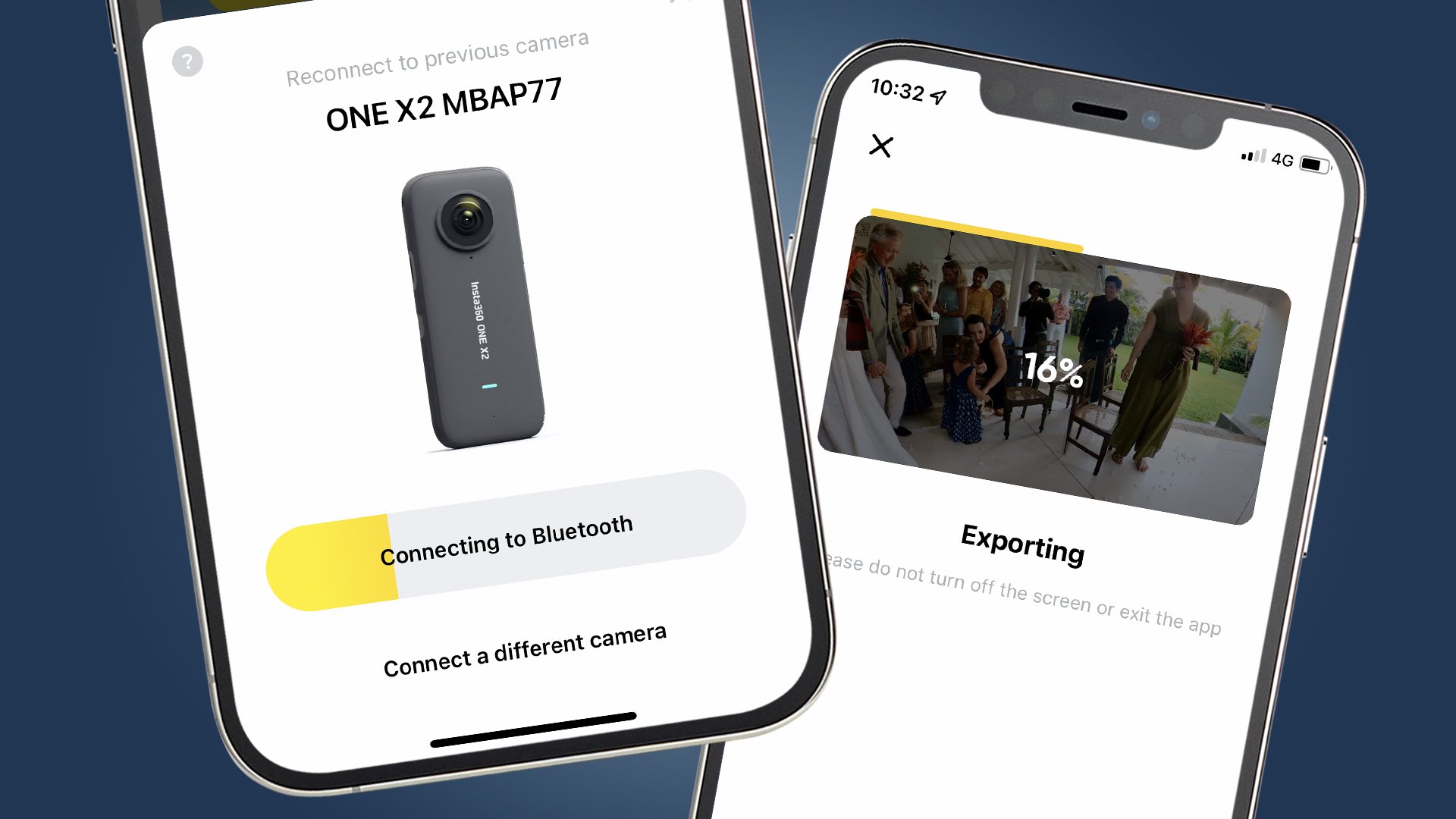
As I was preparing for my wedding, a question I didn't expect to hear so often was, “Who films the ceremony? The answer I gave was equally unexpected: “I'm recording it myself. With a 360° camera.
But that's exactly what I did. After the cost of photography equipment left us sweating with fear for our financial stability, the idea of shelling out more for a full videography setup was simply out of the question.
Don't get me wrong: I understand the value and appreciate the work of professional images, especially in events as important as weddings. If money weren't an issue, my wife and I would have loved to have a movie of our big day captured in 4K. I can see it now: the soft focus as we walk down the aisle, the artful bokeh as the champagne glasses clink, the slow motion of me stumbling on the dance floor.

Unfortunately, like so many couples on the road to marital bliss, money was an object. So instead of breaking the budget in the name of frame rate, I had the bright idea of using a 360-degree camera to record every angle of the ceremony.
Fully loaded, placed on a tripod in the middle of the aisle and used with military discipline by my witness, it still wouldn't capture the creative angles or full frame quality that a videographer could. But I would record every word and every eye wiped at our wedding, for a lot less money. At least that was the plan.
Why did I choose a 360 camera?
Having decided to film our own wedding, a 360 camera was the obvious tool for the job. Of course, a standard DSLR or mirrorless camera on a fixed tripod could have captured a clear angle of the ceremony. But in the right position, a 360 camera would provide unparalleled immersion by filming the entire wedding scene, audience, and all.
More than a spherical novelty, it would also give me unlimited post-editing options. You could crop flat images from anywhere in the resulting 360° images.

So I was able to select and export footage of my beautiful wife's arrival, then pan the video to record a clip of my stepdad wiping his eyes.
And because it would capture the entire spectacle on its own, a 360 camera could be set up and left with a minimum of fuss. What is the gold standard for any wedding day plan?
The 360° wedding montage
Three contenders were vying for the videography job: the GoPro Max, the Insta360 One R Twin Edition, and the Insta360 One X2. Each made a compelling case, but the One X2 won the gig for several reasons.
Its interface is accessible, even with shaky hands due to marriage nerves. The understated design of it would not distract the guests from the main event. It also produces dynamic 360° sequences that blend seamlessly, while the smartphone app is one of the most comprehensive for creative editing. Plus, you can record standard widescreen video at 1440p with a single lens. It's also much cheaper than videography equipment, and unlike videography equipment, I can take it on my honeymoon.

Cleverly, the One X2 can also remove "invisible" Insta360 attachments from images using auto-hide. Mounted on the '2-in-1 Invisible Selfie Stick + Tripod', for example, the mount magically disappears as if Casper is holding the camera. The stand itself is ideal for weddings: much less bulky than a traditional tripod, its flip-up legs and low profile allowed it to blend in easily while standing on the side of the aisle.
I had to stream the video from the Insta360 One X2 during editing, pushing wireless transfer rate limits and making my iPhone sweat more than I did at all times on my wedding day.
The package was completed with a microSD card fast enough to handle the demands of 360° image processing and large enough to continue recording even if the procedure was lengthy. On the recommendation of Insta360, I opted for a SanDisk Extreme Pro V30 A1 64GB card. Accessories between the ceremony and the speeches.
My Insta360 One X2 bundle also included a simple but essential rubber lens cap. Those big glass eyes are vulnerable to scratches, and since the camera had to wait while setup continued, the extra protection made sense.
It works well?
In a day with a million moving parts, the Insta360 One X2 was thankfully easy to use. A few hours before the ceremony, I was able to enjoy a moment of solitary reflection on the place of the ceremony: thinking about where to place the camera.
The Insta360 One X2 has a sleek circular touchscreen, which came in handy for framing on location later in the evening. But to make sure I had it in the best position for the ceremony, I paired it with my smartphone via Wi-Fi and Bluetooth to get a 360° live preview through the app. After a bit of panning and shuffling, I settled into a spot at the end of the first row of chairs. He gave the closest thing to a frontal gaze, not obstructing the hallway, nor anyone's line of sight.

I opted to leave the camera unchanged from its standard setup – full 5.7K 30fps footage is the Insta360 One X2's best, and with no extreme sports on show, that was exactly what we needed. I also kept its FlowState stabilization intelligence enabled, to counteract any swaying of the slim tripod if there was wind.
It was a relief to peek into the recording light and see that the little 360 camera had it all covered. And because it was, guests could put away their smartphones and just enjoy the moment.
The walkthrough with my wingman was easy: press the power button, press the record button, wait for the red light. Of course, we could have used a smartphone to trigger the video, but that would still have required the camera to be on. Likewise, we could have used Insta360's GPS smart remote, but that would have come at an additional cost.
In reality, there was safety in simplicity and physical confirmation that the correct buttons had been pressed and the light was flashing. Especially since I was hiding in a different room, my inner control freak itched, but I couldn't check the settings myself.

And it worked without problems. It wasn't my top priority when I made my grand entrance (honest), but it was a relief to take a look at the recording light and see that the little 360 camera had it all covered. And because it was, guests could put away their smartphones and just enjoy the moment. It also meant we didn't have the pressure of a second set of barrels on us, with the camera crew already trained on my every awkward expression.
In a quiet minute after completing the paperwork, I went back for the camera. After running for about an hour, it ran out of memory card and shut down. I swapped out the microSD card, reminded myself that now was not the time to review footage, set up the backup cell, and walked through the reception area to position it for speeches. Thanks to the endorphins and bubbles now in my bloodstream, I was a little less picky about the positioning this time. Fortunately, the Insta360 One X2 offers champagne-proof accessibility.
How did I edit my 360 wedding video?
One of the main reasons for choosing Insta360 One X2 was its excellent smartphone app. Available for free, it offers a multitude of tools for creative adjustments. Although it is possible to save spherical images, meaning I can relive my wedding day at any time by attaching a pair of VR goggles, the most useful export for most people (including me) is a flat frame. taken within the 360 video.
When you've recorded something as important as your wedding, there's an inherent fear of corrupting or losing your footage. Having suffered a mild heart attack when I couldn't find the Insta360 One X2 the morning after the wedding (frustrated by my own late-night brain hiding it in a shoe), I made sure to save the files twice before doing anything else. - both on a hard drive and in the cloud. Which, given the size of 360 video, required a lot of space and bandwidth.
This file size places almost heavy demands on a smartphone. There wasn't enough space on my iPhone X to save the images to local storage, so I had to stream the video from Insta360 One X2 while I edited it. Which pushed the limits of wireless transfer rates and made my iPhone sweat more than I did at all times on my wedding day.

But stuttering aside, the Insta360 app made a potentially overwhelming process intuitive. There is a lot to digest (so many expressions are shown) and the task is obviously more complicated than if I had left the editing to a professional.
Still, the process of exploring 360° images, placing pins to highlight key moments, and watching the app automatically jump from position to position on the resulting timeline never gets old. Similarly, the app's smart subject tracking and auto framing functions work like magic.
Looking at the images captured by Insta360 One X2, I am excited about the decision to film our own wedding. The result...